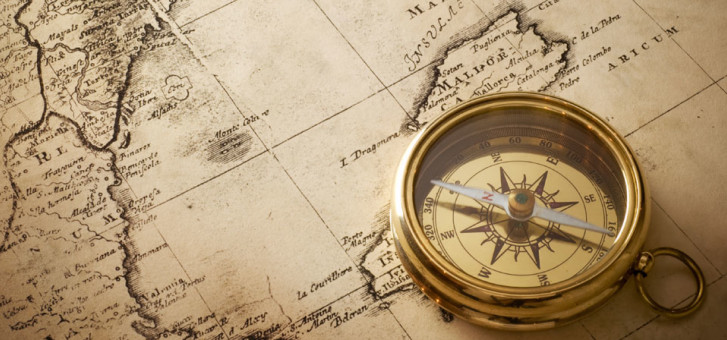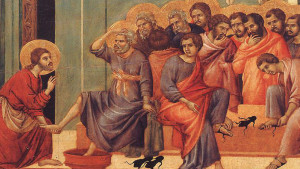It is windy and remote. Yet more than 30 years before any representative from the Church of Rome came to the British Isles, an Irish missionary of the Celtic Church settled on this island and made it the centre of a great missionary movement.
Columba was born into a noble Irish family. He had a good education, being trained by Finnian, in the schools established by Patrick in Ireland.
Columba founded several churches and monasteries in Ireland, including some in Derry and Durrow.
Then in 563 AD, he chose to take the gospel to Scotland. Like Jesus Christ, he took 12 disciples with him. He and his friends decided to travel until Ireland could not be seen. First landing near Campbeltown on the Kintyre Peninsula, he felt it was too close to his homeland. So he moved north to the lonely island of Iona—an island of the Inner Hebrides. Their method of travel was a coracle—a little boat made of a framework of sticks covered with animal hides.
Today, about an hour's hike from the centre of the island, visitors and pilgrims arrive at a small bay on the southern end of the island. This secluded bay has the sound of quiet waves lapping over the stones. Its peace and quietness belies the importance of the arrival of Columba here.
Today this “holy” island—as it is known—can be reached from the Scottish mainland at Oban ferry, via the isle of Mull at Craignure. Then a bus meanders across the island. Finally, after an hour on the bus, it reaches Fionnphort. From there, Iona is less than a kilometre across the water to the west.
When visiting the island today, visitors take the road from the ferry and go slightly uphill past a few shops to the ruins of a nunnery. These ruins date back to around 1200 AD. The road continues to the right, parallel with the water, leading to the abbey.
The centrepiece of this island is a restored abbey. It shows much of its Celtic heritage. The great Celtic cross in front of the cathedral tells of its history and the influence of the Celtic Church. On this island, four Irish kings are buried, as well as seven Norwegian kings. But such is the sacredness of this holy island that 50 Scottish kings up until the 11th century made this holy island their burial site.
Martyrs Bay is just to the south of the wharf and shops. It is the site where Iona's monks were slaughtered by the Vikings or Norsemen who came after the year 793 AD.
A guidebook helps visitors explore the ruins of the nunnery and the tombs. Tourists also journey to the hermit's cell on the southern slopes of Dun1.
Columba came to Scotland with the express purpose of bringing the gospel preached by the disciples of Jesus Christ. With the conversion of Brude, the king of the Picts, Christianity gained momentum. The next king journeyed across to Iona for a blessing at the hands of Columba.
From the Celtic Church, there are many references to show they kept the seventh-day Sabbath. This became the practice in much of Scotland as a result of Columba's work—and those who followed him. It remained a feature of the Celtic church until the 11th century. Then Queen Margaret, the wife of Malcolm III, made determined efforts to exterminate any belief apart from that of the Church of Rome. The exceptionally small chapel in the grounds of Edinburgh Castle reminds us of Queen Margaret—and is the oldest building in Edinburgh.
Columba and his disciples made Iona their missionary centre and travelled from there, preaching right across Scotland and into northern England.
In fact the “holy” island of Lindisfarne was established with connections back to Iona. Disciples from Iona even went as far as the Netherlands, France, Germany and on to Italy and Switzerland.
Truly, Columba established a great missionary centre.
Today, the Iona community consists of men and women from different Christian persuasions. It was founded in 1938 by George MacLeod and offers worship and quiet retreats to seek ways to live the gospel of Jesus Christ in the world today.
Columba died in 597 AD—the year after Augustine from Rome landed in England to bring the beliefs of the Church of Rome. By this time, the Celtic Church was well established across Scotland and south into England.
In the next century, at the Synod of Whitby in 664 AD, the method of selecting the dates for Easter was decided. However, there was also a confrontation between the Celtic Church and those following the Church of Rome. After hearing presentations by both groups, King Oswiu of Northumbria chose to side with the Church of Rome. The Celtic Church then retreated northward to Scotland and westward to Wales.
Truly, Columba pioneered the work of the Christian church across Scotland and the Christian church was well served by this travelling disciple of Christ. He died on the holy island of Iona and is buried there. A tiny chapel in the Abbey of Iona is his resting place. His life bears witness to the title “Saint” often given to him.




